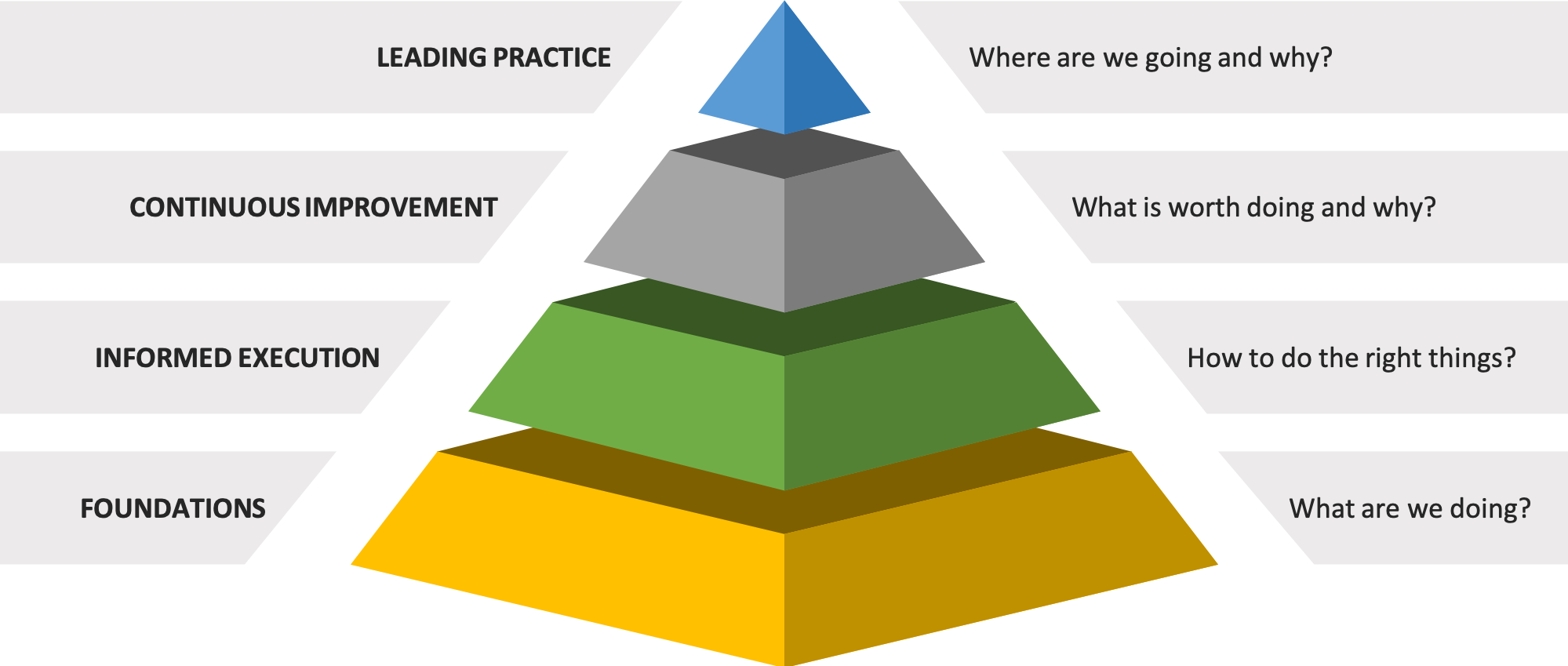Implementing Operations Management
What is Operations Management
The AtlasOMS Operations Management System assists organizations with managing asset life cycles, streamlining maintenance operations, maximize supply chain performance, enhance safety, and improve regulatory compliance. AtlasOMS is a cloud-based GIS focused Operations Management system that plans, tracks, and manages your work activities and assets to cut downtime and costs.
Stages of Implementation
Enterprise Operations Management offers a myriad of benefits to an organization, primarily an asset-heavy company. Most organizations implement and operations management solution in the following stages.

Stage 1. Foundations
Stage 1 is the foundational stage of OMS implementation
This is the foundational stage in the implementation and is focused on organizing and cataloging the various items and work flows within the organizations operations.
For example, organizations in Stage 1 focus on the following concepts:
- Asset Register
- Roles and Responsibilities
- Work Catalog
- Request Registry
- Labor Records
- Organizational Structure
Stage 2. Informed Execution
Stage 2 has a topical focuses on operational decisions and concepts
Once work flows and and key elements are identified (Stage 1), the organization can begin to analyze specific processes for effectiveness and efficiency. Stage 2 focuses on key tactical issues and help to answer the question How to do the right things?
For example, organizations in Stage 2 focus on the following concepts:
- Lean Maintenance
- Cost Collection & Reporting
- Shutdown Management
- Failure Reporting
- Planned Jobs
- Warranty Management
- Vendor Management
- Tools and Facilities
Stage 3. Continuous Improvement
Stage 3 has a operational area focus on tactical decisions and concepts
Stage 3 focuses on key tactical issues and help to answer the question What is worth doing and why?
For example, organizations in Stage 2 focus on the following concepts:
- Lean Maintenance
- Cost Collection & Reporting
- Preventative Maintenance Optimization
- Performance & Compliance KPIs
- Labor Force Optimization
- Work Quality
- Post Execution Review
- Root Cause / Failure Analysis
Stage 4. Leading Practice
Stage 4 has a global focuses on strategic decisions and concepts
Stage 4 focuses on key tactical issues and help to answer the question Where are we going and why?
For example, organizations in Stage 2 focus on the following concepts:
- Failure Modes Effects Analysis
- Integrated Enabling Systems & Technologies
- Reliability Centered Maintenance
- Optimized Life Cycle Asset Management
- Operations Driven Reliability
- Risk Analysis & Management Program